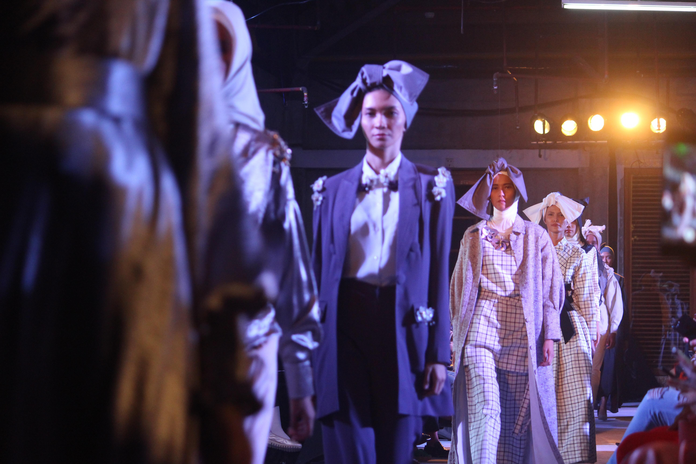Have you ever wondered why fashion designers, such as Comme Des Garçons, Givenchy and Alexander McQueen produce such avant-garde and unwearable outfits for the runway? These are the ones that have copious layers of fabrics, fake body limbs attached to the garments or food made out of different cloth materials. This is because the fashion industry excels at being a way for designers to express their creative talent through clothing, rather than on a canvas. Instead of showcasing their talent in an art show, they display them on a catwalk at a runway show. Fashion is one of the many art forms that frequently goes unnoticed in the art world.
According to the Oxford Dictionary, art is defined as: “the expression or application of human creative skill and imagination, typically in a visual form such as painting or sculpture, producing works to be appreciated primarily for their beauty or emotional power”. Although the definition stresses the major types of art forms, like painting and sculpting, the description of the extent of art follows exactly what being a fashion designer entails. What better way to express creativity and character than through clothes? Historically, art had an indefinable nature, which allowed for boundless creativity for thousands of years. The word art comes from the Latin word “ars,” which means a craft or skill. The root of the word itself has no confines, which means anything that takes a considerable amount of skill can be considered an art form. With the intricacy involved with creating clothes for both the runway and the consumer world, there is no doubt that fashion designers can hold the title of an artist.

For a long time, society struggled with the lax nature of modern art, that is until pop culture took over the fine arts industry. Influential artist, Andy Warhol, is one of the most renowned masters of visual art of the 20th Century, best known for his colorful style and ironic commentary on traditional art, known as “Pop Art.” The pieces he created, although some of the most visually stimulating paintings you will come across, were based on the most basic commercial items. One of the most well-known paintings of his career, “Campbell’s Soup Cans,” is inspired by such a simplistic product found on the shelf of a Stop & Shop. Warhol’s emphasis on consumer culture is exactly what loosened the knot around what is considered art, not by definition, but by the public.
Due to the high demand for high-end fashion and the respect that many designers have in their industry, fashion gurus can have free reign when it comes to creating collections. Like Warhol, Alexander McQueen had a distinctive role in culture during his prime years of fashion design. With his dark, romantic and grotesque elements to his collections, McQueen was able to touch on many societal issues just through his runway items alone. In 1995, the designer produced a runway show titled “Highland Rape,” which touched on the toxic misogyny and dangerous living environments that many women deal with every day. However, not every collection used such intense topics for their inspiration. One of McQueen’s debut clothing items that sent him skyrocketing into the industry was his “bumster” trousers, which was one of the inspirations of the iconic low-rise jean look of the early 2000s. McQueen, and other designers like him, evidently used clothing as an expression of not only their skills as artists but also their ability to hold humanity accountable for countless issues that need to be addressed off the runway.
If you are still not convinced that this is art, you should always consider the fashion that literally mimics fine art in its work. For instance, the 1965 Yves Saint Laurent dress collection called “The Mondrian Collection” was inspired by the famous geometric paintings by Piet Mondrian. They were so influential to the fashion world that some of the dresses now reside in the Metropolitan Museum of Art. Designers can mirror the effect of art through their pieces, just as Yves Saint Laurent did in its 1965 collection. Big names in fashion that collaborate with influential painters spotlight the fluid relationship between traditional art and fashion. The only difference is designers use bodies to showcase their art, instead of canvases hanging on walls or sculptures sitting on ivory posts.
Although high-end, runway fashion is the most intriguing of artistry when it comes to fashion, everyday prêt-à-porter outfits still categorically fit into the standard of art. Trends like streetwear, cottagecore, light academia and alternative style are just a few examples of the limitless possibilities of expression through fashion in 2021. The intricate craft of styling an outfit for the day is a valuable art form, as your clothes help portray your personality before you even speak. A passion for fashion is just one of the many ways you can include art into your lifestyle.


